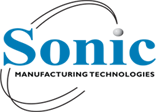
Digital Transformation in Action
We’re entering an age where data and information will dictate how we run our businesses. For the companies that embrace this reality, the speed of data acquisition—and the ability to utilize this information to work smarter, better, and faster— will serve as a differentiator between one organization and its competitors.
Read the full Digi-Key white paper Breaking Down the Walls Between Procurement, Engineering, and Design: 5 challenges and how you can solve these problems using a digital platform.
Chapter 8 – Digital Transformation in Action
(excerpt from page 11)
Headquartered in Fremont, Ca., Sonic Manufacturing Technologies provides in-house board layout, prototyping, and New Product Introduction (NPI) through full production in as little as five to 10 days. That speed to market necessitates a digital procurement strategy that not only enables a streamlined supply chain, but also supports good internal communication and collaboration.
Every week, Sonic orders about 1 million parts to support its production line. “If we order them Monday, we have one- half-a-million parts on our dock by Wednesday,” says David Ginsberg, VP of supply chain. “Those are just not speeds that people can move at; this has to be done with automation.”
Rolling Out the Digital Supply Chain
Using Digi-Key’s APIs and cloud-based procurement platform, Sonic has been able to automate 50% of its purchasing activity without having to add staff. The staff that it does have can now focus on more important activities—mainly, selecting the best sources for the 60,000 line items that the company buys annually; coordinating with engineering and design departments; and maintaining high customer service levels.
In total, Sonic’s cost to place an order (i.e., total landed cost) was reduced from a previous $40 to a current $9. Not every company is going to achieve 60% savings, of course, but
the one that saves 20% to 30% (a more common target) on procurement costs of $400,000 a year can rack up significant savings right out of the gate (and over time).
Ginsberg sees real value in the company’s digital supply chain, noting that it’s much more efficient than its predecessor. “It’s a lot cheaper to move data around than to move physical assets around,” he says, “and much quicker to move information via automation, vs. making phone calls and sending emails.”
When Procurement and Engineering Align
In terms of intracompany collaboration, Ginsberg says the platform is helping Sonic break down some of the issues that have plagued purchasing departments for decades. “Operationally, if you’re on the team that’s getting product to customers and meeting their expectations,” Ginsberg explains, “and all while engineering is designing a difficult BOM filled with sole-source parts, there’s obviously going to be a problem in our here’s-your-product-the-next-day world.”
To solve these issues, Ginsberg says engineers and designers have to take supply chain issues (e.g., price, availability, lead time) into account before locking into a design and expecting it to be built within two weeks. “Generationally, anyone who has grown up in the past 20 years just knows next-day delivery,” Ginsberg points out. “They don’t even know what the word ‘lead time’ means.”
To help break through some of these traditional barriers and get procurement and engineering working from the same playbook, Ginsberg expects more companies to adopt digital supply chain mindsets. “It’s definitely catching on because the cost drivers are dictating that adoption,” says Ginsberg. “It’s simply impossible to compete effectively using a manual, human-centric supply chain anymore.”
But that doesn’t mean humans will be replaced by automation; quite the contrary, in fact. For Sonic, Ginsberg says the goal is to get to a point where 65% to 75% of processes are fully automated, with staff members solving problems, managing exceptions, and handling other intuitive tasks.
“The more you collapse your delivery lead times, the more exceptions you have,” he explains. Reducing a 12- week timeframe to 10 weeks, for example, translates into two weeks of sourcing, problem-solving, and exception management. Collapse that to four weeks, Ginsberg notes, and those human-centric tasks now span eight weeks.
“In the digital world, human expertise will be used to work together on sourcing, problem solving, exception management, and everything else that buyers really need to be focused on,” says Ginsberg, “not the repetitive ordering that a computer can do once we’ve already agreed on pricing and sourcing.”
CALL FOR A QUOTE
(510) 580-8500
OR EMAIL:
Sales@Sonicmfg.com
